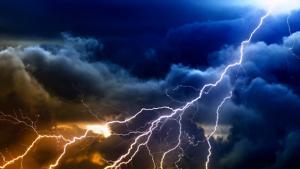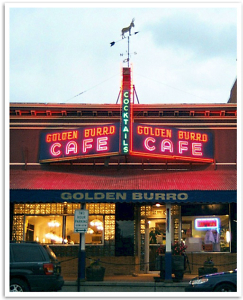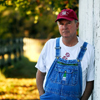When I was in college, I spent my summers working with the U.S. Forest Service in Leadville, Colorado. It’s an old mining town which sits, at 10,000 feet, among the highest peaks in Colorado. Our crew of five did surveying, trail work, and fire suppression. We lived ten miles outside Leadville in a run-down, single-wide Forest Service trailer grandly called the Crystal Lake Guard Station.
 One summer we were assigned work in Cottonwood Canyon, so we moved our crew thirty miles south to the hamlet of Buena Vista. I was excited about the move because I had been making a project of trying to climb as many of Colorado’s 14,000 foot peaks as I could. Buena Vista was surrounded by four of them: Mt. Harvard, Mt. Columbia, Mt. Princeton, and Mt. Yale, jumbled together in a high massif called the Collegiate Peaks Wilderness Area. They were all difficult climbs, but I hoped to climb them all.
One summer we were assigned work in Cottonwood Canyon, so we moved our crew thirty miles south to the hamlet of Buena Vista. I was excited about the move because I had been making a project of trying to climb as many of Colorado’s 14,000 foot peaks as I could. Buena Vista was surrounded by four of them: Mt. Harvard, Mt. Columbia, Mt. Princeton, and Mt. Yale, jumbled together in a high massif called the Collegiate Peaks Wilderness Area. They were all difficult climbs, but I hoped to climb them all.
I first picked Mt. Yale since it didn’t appear to require any roped-up climbing and so I wouldn’t need a partner on the mountain. Solo hiking and climbing in the Rockies violates every rule of mountain safety, particularly on an unmarked route I had picked on my own, but that’s the way I liked to do it and had done it all my life.
As our crew worked our way up Cottonwood Canyon, I would catch periodic glimpses of possible routes up Mt. Yale and began planning the climb. The route would begin from a Forest Service road at about 8,000 feet and ascend over 6,000 feet to the summit. According to my topo map, it was going to be very steep.
 One weekend, then, when the rest of the crew had gone to Colorado Springs, I set out. From the Forest Service road, the route proceeded sharply upward through a thick evergreen forest, until at tree line it opened onto a steeply ascending ramp of tundra. The tundra was a broad expanse of moss and grasses, dotted with snowfields, and in mid-July it was simply covered with wildflowers. I could not take a step without crushing them. It was a beautiful place, everything wide open, with spectacular prospects in all directions.
One weekend, then, when the rest of the crew had gone to Colorado Springs, I set out. From the Forest Service road, the route proceeded sharply upward through a thick evergreen forest, until at tree line it opened onto a steeply ascending ramp of tundra. The tundra was a broad expanse of moss and grasses, dotted with snowfields, and in mid-July it was simply covered with wildflowers. I could not take a step without crushing them. It was a beautiful place, everything wide open, with spectacular prospects in all directions.
Then I began the long and arduous ascent to the crest of the ramp. After an hour I reached the end of the tundra, and the terrain became a vast field of boulders and scree extending all the way to the summit. The climb from this point was difficult and rough, requiring careful footing and a good bit of hand-scrambling. Finally, about noon, I labored up the final pitch and reached the top. The climb had taken about four hours.
The view from the summit was as beautiful as any I’ve seen in the Colorado Rockies. No signs of civilization were visible, even from that height—only waves of jumbled, snow-flanked peaks in every direction. Mt. Harvard and Mt. Columbia stood to the north, with Mt. Princeton’s huge bulk filling the southern skyline. For a long time, I just stood, filling my eyes and my memory—I never carried a camera—and then wandered the broad perimeter of the summit. Yale is climbed fairly often, but I saw no one else that day.
As I sat and ate my lunch, shadows of clouds lay across the mountains like wrinkled blankets, and thunderstorms drifted through the distant sky trailing tendrils of rain like silver jelly fish. It was unimaginably beautiful. But in due course a big storm, firing lightning, began approaching Yale from the west. People are killed by lightning every summer in the Colorado high country, so it was time for me to go.
Back with the crew on Monday, I told my partner, Howard Lyles, about the trip, and he was excited about it. He said he’d like to make the climb himself if I was willing to go back. I knew Howard’s strength and endurance and his ability to handle himself in the rocks, so I agreed. As the work day wore on, Howard became even more excited about the trip and suggested that we knock off work early one day and climb Yale late in the afternoon. The sun stayed up long into the evening that time of year, and he wanted to go up and watch the sunset. He said we could descend in the dark using our Forest Service helmets and headlamps. I thought about the route for a while and concluded that it could be done. So one mid-afternoon the next week, we set off at warp speed up the mountain.
 We reached the summit just as night was falling, and the sunset was as beautiful as we had hoped it would be. Howard began taking pictures before the light was gone while I wandered idly around the north side of the summit. What I saw there concerned me. A big storm in the bowl of the valley below was beginning to boil up over Yale’s summit ridge. It had not been visible to us from where we had come up on the other side of the peak. I yelled to Howard as lightning began sparking among the rocks, and we began scrambling back down.
We reached the summit just as night was falling, and the sunset was as beautiful as we had hoped it would be. Howard began taking pictures before the light was gone while I wandered idly around the north side of the summit. What I saw there concerned me. A big storm in the bowl of the valley below was beginning to boil up over Yale’s summit ridge. It had not been visible to us from where we had come up on the other side of the peak. I yelled to Howard as lightning began sparking among the rocks, and we began scrambling back down.
As we descended, we heard the characteristic whining in the air, and sparks would begin to fire everywhere. Then a few seconds later, a roaring explosion of lightning would shatter the air, and the split atmosphere would smell of ozone. It was exciting but extremely dangerous. During one prior climb on Mt. Elbert I had been bowled over by the concussion of a strike, and I didn’t want to catch the lightning itself this time. We had to descend quickly.
Further down, partway through the boulder field, Howard became so exhilarated by the storm that he wanted to stop and take pictures of the lightning strikes and St. Elmo’s fire. “You don’t get many chances like this,” he yelled. I protested, but I waited while he gathered some shots. Then he reached down from above me, with lightning exploding all around us, and asked me to hold his camera while he tightened his helmet. I reached up to take the camera in the quivering air, and my feet slipped out from under me on the wet rocks.
I fell a short distance and landed on my head in the rocks. My helmet kept me from receiving a serious injury, but my mouth struck the rock as I pitched into the ground. I was stunned and soon slipped into shock. Howard quickly brought me back to my senses, but I felt a sharp pain in my mouth. I gestured toward it, and Howard brushed away the blood and yelled, “You’ve knocked your front teeth out!” He helped me up and we continued down.

The rest of the night was a haze of pain, semi-consciousness, and shivering, hanging onto Howard’s elbow as we followed the beams of our headlamps down the boulder field and into the tundra. There, I remember lying in the flowers for a time, while the cold rain pelted my face and I shivered. I don’t know how I made it the rest of the way down, but Howard told me later that he talked to me all the way to try to keep me awake and moving. He knew he couldn’t carry me.
Finally, we made it to the truck and Howard drove to Buena Vista. There was no dentist there, but Howard found a telephone and called the only dentist listed in Leadville, who said to meet him at his office. By this time, it was midnight, and it was still raining.
I vaguely remember seeing the dentist that night and then curling up on a bed in the Forest Service shop and falling asleep. The next day Howard drove me back to the dentist, where I learned that I had not knocked my teeth out but instead had sheared them off at the gum line. “That’s where your pain is coming from,” the dentist said. “You have exposed nerves in all three teeth. It’s going to require immediate root canals in all three of them and crowns made later.”
And so began two months of dental care in Leadville. I still had to go to work, of course, but Ranger Ficke arranged for me to be shifted from Buena Vista to the Leadville crew at Turquoise Lake. I was able to function, but the cold air on my broken teeth brought serious pain. I tried to rig a mask from a bandana to protect my mouth, but nothing really worked. So I kept my coat sleeve over my face as much as I could to try to block the wind.
 Meanwhile, the dentist went about his work. He was a young guy named Hazelwood, just out of the University of Missouri, who had moved to Leadville because he liked to hunt. His lovely dental assistant turned out to be a girlfriend he had brought with him. He relished a complex case like mine—he’d seen very few of them—so he took great care to do the job right. In the meantime, I endured the pain.
Meanwhile, the dentist went about his work. He was a young guy named Hazelwood, just out of the University of Missouri, who had moved to Leadville because he liked to hunt. His lovely dental assistant turned out to be a girlfriend he had brought with him. He relished a complex case like mine—he’d seen very few of them—so he took great care to do the job right. In the meantime, I endured the pain.
Things weren’t all bad, of course. People got a kick out of seeing me with no front teeth, and after a while I got into the spirit of it too. After work, when we’d drop by the Dollar for a couple of beers, Rolanda, the barkeep, would whoop as I came in the door. Then she would offer me a free beer if I would go around and show everyone my gapped mouth. People would shriek in horror or delight, some would even offer me tips, and we’d all have a good time. Sometimes Rolanda would give me two beers.
And another dear, Loretta, who served dinner at the Golden Burro (also known as the Brass Ass) watched one night as I cut up my hamburger into bite-sized pieces and ate them with a fork. She said, “You have such polite table manners!” I looked up at her and grinned, and she had to stifle a laugh as she tried to look concerned. Finally we both broke down laughing, with me spewing hamburger all over the counter. Loretta and I were fast friends for a long time after that, though she never offered me a free beer.
I guess there should be a moral in this story, a lesson or a cautionary tale—“Don’t go into the mountains alone!” But the experience did nothing to change my solo ways. Some things are too good to give up.

Copyright (c) 2017 by Wayne Christeson. All rights reserved. Chapter 16‘s copyeditor, Wayne Christeson, is a Vanderbilt graduate and a retired attorney who lives with his wife, Anne, on a farm in Leiper’s Fork. His work has appeared in Vanderbilt Magazine, Nashville Arts, the Nashville Scene, and the Lost Coast Review, among other publications.





